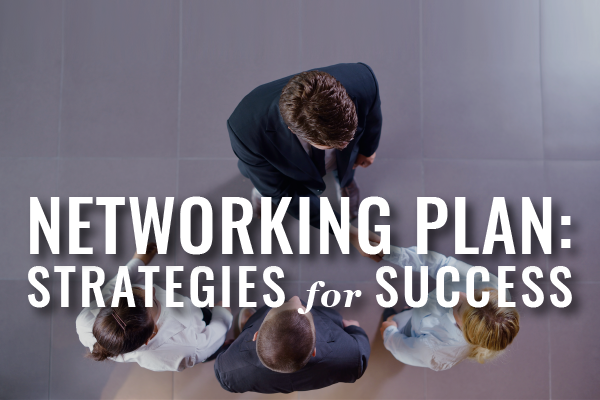Whether your bottom line is seeking more clients or new opportunities, strategic networking will help.
Strategic networking is an outcome built on effective marketing and sales skills. And it’s about more than accumulating as many referral connections as possible. The best predictor of career success “(a)ccording to multiple, peer-reviewed studies (is) simply being in an open network instead of a closed one,” as discussed by one of the world’s top networking scientists in this Forbes article.
Successful rainmakers have planned and are prepared to speak about themselves and their law firms. They are skilled at listening and asking questions that develop relationships and lead to sales opportunities. They have mapped and know their sales network, are executing strategic plans to expand the right areas of their sales network, and have developed a marketing and sales mindset. Part of a marketing and sales strategic culture change management project is training that helps the individuals and the law firm’s bottomline.
Strategic networking is an efficient use of your time and money because:
- A referral generates 80% more results than a call.
- Approximately 70% of all jobs are found through networking.
- Most people you meet have at least 250 contacts.
- Anyone you might want to meet is at most only 4-5 degrees of connection from you.
But what if you hate networking because it drains you of energy, you don’t know how to act and what to say, and it feels like extra work when you have too much work already? Know that we frequently make decisions emotionally or by reacting without thinking. This applies to networking and engaging in it. If you are an introvert, then being in crowds and talking with many people is exhausting for you, not energizing. If you are shy, going into a room of strangers and striking up conversations is daunting. If you believe that talking about yourself is bragging, you will have a difficult time crafting and delivering effective marketing messages and embracing others’. If you belief that networking is a waste of time, it will be.
Be prepared to identify your hidden feelings and thinking and manage them because networking should be an integral piece of your marketing and business development strategy.
HOW TO PREPARE FOR THE EVENT
Networking is more than attending events and glad-handing. Plan before you attend. Begin with goals. It is unlikely that you will meet you next client, but you might. It’s more likely that you’ll need to attend several events before you have polished your networking skills and learned how to demonstrate interest in others, talk about yourself, and manage the contacts you make. Before you attend your next event:
- Plan. What type of events should you attend? The answer to this question depends on where your clients and referral sources will be. What do you know about the interests of these people? What do they do with their free time?
- Prepare questions to ask. Demonstrate your curiosity about others by asking open-ended questions to find out what matters to people. The traditional questions are: What do you do? Where do you work? Try coming up with a few more memorable questions. Where is your favorite place to visit? What would you do if you had enough money to quit your job today?
- Demonstrate your ability to talk about yourself with 2-3 short sentences. How, in 30 seconds or less, will you answer the questions: What’s new? What do you do? Do not aim for a comprehensive answer. There is no need to push out every bit of information about yourself that you think someone may need to know in the future. The purpose is to get a next touch. When you talk about your work, identify a problem you can solve. Then explain how you will solve it, for whom you want to solve it.Allow others to ask you questions. Business opportunities follow relationships and it takes time and a give-and-take series of conversation to develop lasting relationships.
TIPS TO PRACTICE WHEN YOU’RE IN THE MOMENT
- Be Present. Your cell phone is a distraction to yourself and others. Put it away.
- Volunteer your name when meeting others. If you’ve met before remind them of the context, if you recall. It’s easy for any of us to forget a name or even a face when we are feeling anxious and our cognitive skills are not in top form.
- Introduce people to each other and explain how you know them, whenever possible. Win-Win-Win.
- Think of how to use the event context – food, drink, venue – to connect. The purpose of networking events is not for you to eat or drink but can make it easier to enter and exit conversations. Be helpful to someone else – or escape them – by offering to get them a drink.
- Meet new people. Everyone else needs to network, too. If you’re uncomfortable trying to exit a conversation, ask them what they’re hoping to get from the event, and practice (1) working that into a transition to guide them to their next conversation and (2) being uncomfortable and doing it anyway.
- Be Curious. Ask questions. Look for topics of mutual interest. Offer a compliment. Ask others for introductions to people they know. Read up on a subject ripe for a light discussion.
- Be positive. Don’t complain. Smile and it is likely that someone will smile back.This is alwaysa good way to start a conversation with someone new.
- Start a conversation with someone who is standing alone. It’s likely that networking is even more difficult for them than it is for you.
- When exiting a conversation, do not forget to mention how much you have enjoyed the conversation.
- Ask for a business card. If you are able, make a note on the back of the card that will help you recall each person later. Find an easy to reach place to store the cards you collect. When your name tag is on a lanyard, it may be easy to put them in the back of your name tag. It’s likely that you’ll be asked for your business card in return. Your cards should be easy to reach, too.
HOW TO OPTIMIZE YOUR TRACTION AFTER THE EVENT
After you’ve made new connections, you have to strategically choose and prioritize which to move forward with. Then you have to plan how.
- Consider how the person you just met fits into your network. Do they know other people that you know? It’s difficult to predict whether a person, you have just met, will become a client or a referral source in the future.
- Update your contact list or network contact system to save and easily access information about your new contacts.
- Should you follow up by an email or a phone call? Do you want to suggest getting together for a drink or lunch? Did the person mention a need that you can easily satisfy?
- Connect with new contacts on social media.
- Integrate your new contacts into your network development tickler system. You want to be top-of-mind when they have a need for what you do for themselves or someone else in their network. Follow up with emails, phone calls, and holiday cards without overwhelming anyone.
RESILIENCE
Networking, like any aspect of marketing and business development is like job-hunting. We tend to get a lot of NOs before we get a YES. When engaging in a challenging activity, it’s good to have a significant source of resilience combined with what we call a learning mindset.
Resilience is the ability to rebound quickly and persevere in the face of a difficult challenge. A learning mindset is a lens on failures, mistakes, and the long road to success as a journey filled with new information to incorporate into your plans to reach your goals and new opportunities to practice new skills.
It usually takes years to transition a new contact into a client or referral source. Set your plans and expectations accordingly. This allows space for making mistakes and moving. And it means this is a slow process in general and for most people.
You must understand that you can develop your mindset. And you can do that with help from two different researchers who offer self-assessments on grit and growth mindset.
- Carol Dweck‘s research at Stanford on what she terms a “growth mindset” focuses on how people think about intelligence and talent as either something limited and innate or subject to development and expansion. Take the Growth Mindset Assessment here.
- Angela Duckworth focuses on a factor she calls “grit”, which describes how people make sense of and respond to challenges. Take the Grit Assessment here.
From there, you can make a plan to develop each. Our hidden ways of thinking and making decisions about networking are the same for any challenge. If you need more grit or a more robust learning mindset, you have an opportunity to develop both. You’ll develop each by using the skill. The sooner you start, the sooner you can reach results!




